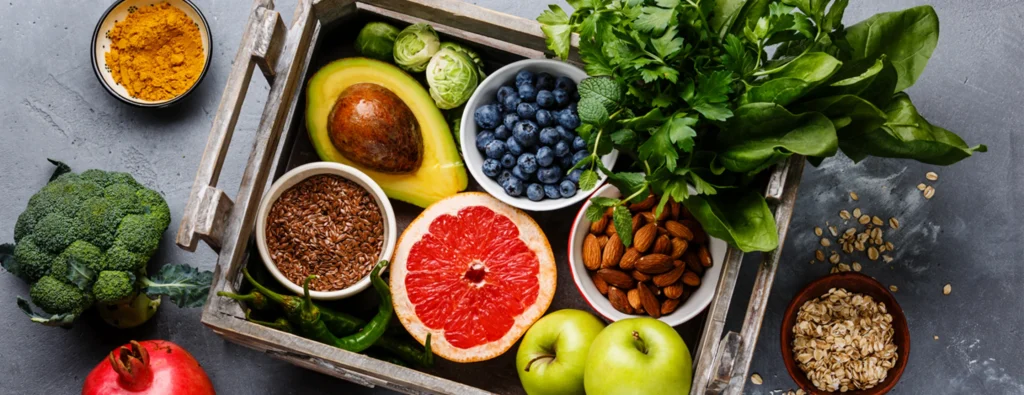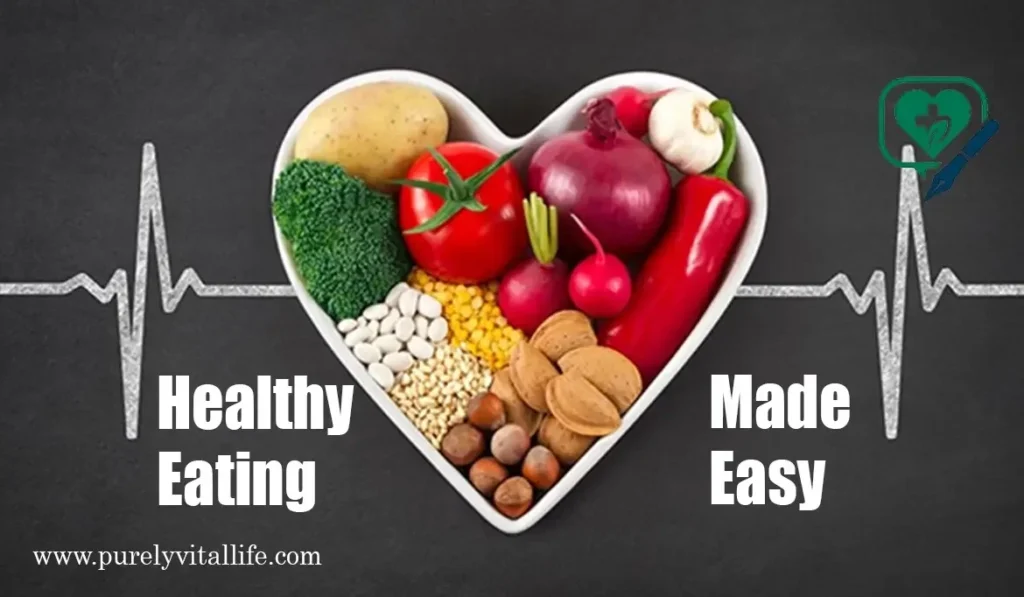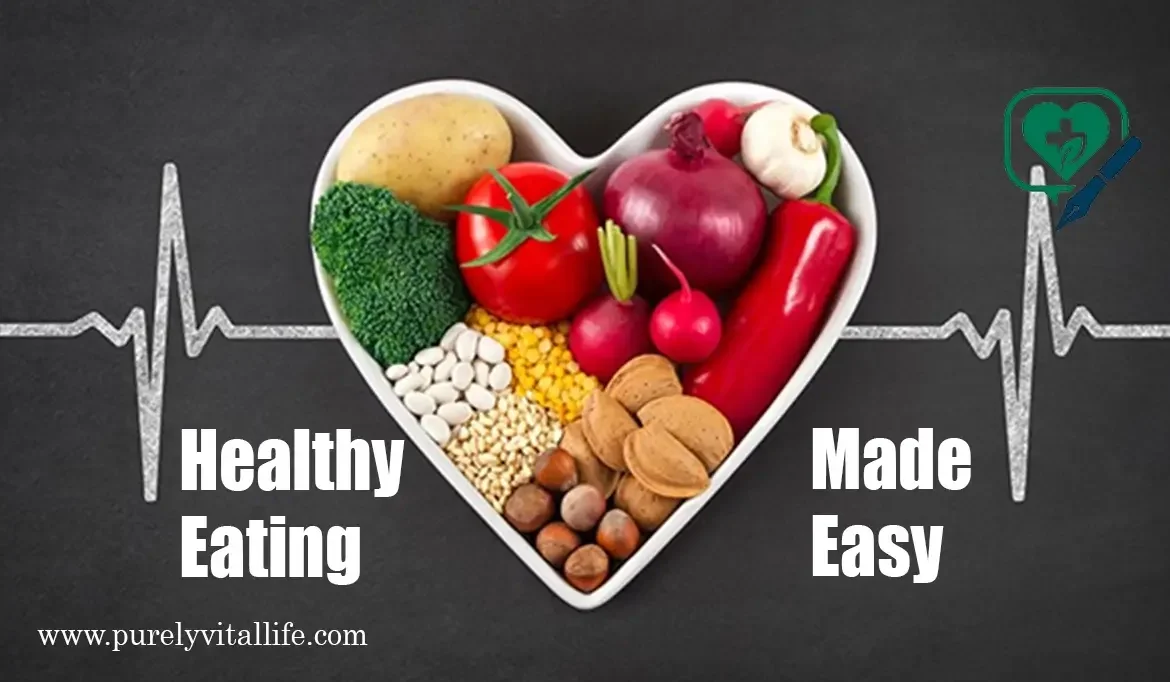In a world buzzing with grab-and-go meals and endless snack temptations, committing to healthy eating doesn’t have to feel like a chore. At https://tastetrove.net/, we’re passionate about turning nutritious choices into flavorful adventures that fit seamlessly into your life. Whether you’re a busy parent, a fitness enthusiast, or just someone looking to feel more energized, this guide breaks down the top nutrition solutions for 2025. We’ll cover simple strategies, evidence-based diets, and practical tips to make wholesome eating effortless—and delicious. Let’s dive in!
The Foundation: Building a Balanced Plate
Before jumping into fancy trends, start with the basics. A healthy diet is all about balance, variety, and moderation. According to the Dietary Guidelines for Americans, 2020-2025, aim to fill half your plate with fruits and vegetables, a quarter with whole grains, and the remaining quarter with lean proteins, plus a side of dairy or alternatives for calcium.
This “plate method” is a game-changer for portion control and nutrient density. Pro tip: Swap refined grains for whole ones like quinoa or brown rice to boost fiber intake, which supports digestion and steady energy levels. For inspiration, check out our easy quinoa salad recipe that embodies this approach—ready in under 30 minutes!
Top Nutrition Solutions for Effortless Wellness
Ready to level up? Here are four proven nutrition solutions tailored for 2025’s health landscape. These aren’t restrictive fads; they’re flexible frameworks backed by experts.
1. Adopt the Mediterranean Diet: Flavor-Packed and Heart-Smart
The Mediterranean diet tops the charts for its simplicity and sustainability, emphasizing whole foods like olive oil, nuts, fish, and abundant produce. Studies show it reduces heart disease risk and promotes longevity by focusing on anti-inflammatory foods.
Make it easy: Start your day with Greek yogurt topped with berries and a handful of almonds. For dinner, try grilling salmon with a side of roasted veggies. At Tastetrove, our Mediterranean meal prep guide offers five recipes to stock your fridge for the week. Externally, explore the American Heart Association’s guide to healthy habits for more science-backed tweaks.
2. Master Meal Prepping: Your Weekly Nutrition Hack
Time-crunched? Meal prepping is the ultimate shortcut to consistent healthy eating. Plan ahead to avoid impulse orders—stock up on lean proteins like chicken or tofu, vibrant veggies, and whole grains.
How to start: Dedicate one afternoon to chopping, cooking, and portioning into reusable containers. Focus on versatile bases like a big batch of stir-fried veggies that pair with anything. The Mayo Clinic’s meal planning toolkit has printable templates to get you organized. Pair it with Tastetrove’s beginner-friendly veggie stir-fry for a nutrient boost without the fuss.

3. Prioritize Plant-Based Power: Superfoods on a Budget
Going more plant-forward isn’t about going vegan—it’s about crowding in nutrient-dense foods like leafy greens, berries, and legumes. A whole-food, plant-based approach can slash chronic disease risks while keeping meals exciting.
Spotlight superfoods: Incorporate chia seeds for omega-3s, kale for vitamins, and lentils for plant protein. Budget hack: Frozen berries are just as nutritious as fresh and last longer. Dive deeper with the CDC’s healthy eating tips, and try our superfood smoothie bowl for a quick breakfast win.
4. Track and Tweak with Tech: Apps for Smarter Choices
In 2025, nutrition apps are smarter than ever, offering personalized insights without the guesswork. Tools like MyFitnessPal or Lose It! scan barcodes, suggest swaps, and track macros effortlessly.
Bonus: The DASH Eating Plan app integration can help manage blood pressure through sodium-smart meals. For a low-tech start, jot down one daily win in a journal. Explore Tastetrove’s app-recommended grocery list to sync your tech with real-food shopping.
Quick Wins: 25 Everyday Tips to Stay on Track
Need bite-sized changes? Borrow from these timeless gems: Ditch sugary sodas for sparkling water with lemon, savor fruits whole instead of juiced, and opt for black coffee occasionally to cut calories. Small swaps add up—aim for one per week.
Your Path to Sustainable Nutrition Starts Now
Healthy eating isn’t a sprint; it’s a savory journey. By leaning on these top solutions—from Mediterranean feasts to smart prepping—you’ll nourish your body without sacrificing joy. At Tastetrove, we’re here to support you every step (and bite) of the way. What’s your first easy change? Share in the comments below, or browse our full nutrition hub for more ideas.
Ready to cook? Head to our recipe index and tag us @Tastetrove on social for a shoutout. Here’s to healthier, happier you in 2025!
For more on balanced diets across life stages, visit Great River Health’s 2025 nutrition insights.
Healthy Eating FAQs: Your Questions Answered
By the Tastetrove Team | September 14, 2025
We’ve compiled answers to some of the most common questions about healthy eating to complement our article, Healthy Eating Made Easy: Top Nutrition Solutions. These FAQs address practical concerns, dispel myths, and offer actionable tips to help you embrace nutritious habits with confidence. Let’s get started!
1. What is the easiest way to start eating healthier without feeling overwhelmed?
Starting small is key. Focus on one change at a time, like adding a serving of vegetables to dinner or swapping soda for water. The CDC’s healthy eating tips suggest aiming for half your plate to be fruits and veggies. Try our easy quinoa salad recipe for a beginner-friendly, nutrient-packed meal that’s ready in under 30 minutes.
2. Is the Mediterranean diet suitable for everyone?
The Mediterranean diet is versatile and works for most people, emphasizing whole foods like fruits, vegetables, nuts, and lean proteins. It’s especially beneficial for heart health, as noted by the American Heart Association. However, if you have specific dietary restrictions (e.g., nut allergies or gluten intolerance), consult a dietitian to tailor it. Check our Mediterranean meal prep guide for customizable ideas.
3. How can I meal prep if I’m short on time or kitchen space?
Meal prepping doesn’t require hours or a big kitchen. Dedicate 1–2 hours weekly to batch-cook simple ingredients like grilled chicken, roasted veggies, or brown rice. Use stackable containers to save space. The Mayo Clinic’s meal planning toolkit offers templates to streamline planning. Our beginner-friendly veggie stir-fry is perfect for quick prep with minimal equipment.
4. Are plant-based diets expensive?
Not necessarily! Plant-based eating can be budget-friendly by focusing on affordable staples like lentils, beans, and frozen produce. The Dietary Guidelines for Americans highlight legumes as cost-effective protein sources. Buy in bulk and opt for seasonal or frozen veggies to save. Try our superfood smoothie bowl for a cheap, nutrient-dense breakfast.
5. Do I need to track calories to eat healthily?
Not always. While apps like MyFitnessPal can help, healthy eating is more about quality than strict calorie counting. Focus on nutrient-dense foods like whole grains, lean proteins, and produce, as recommended by the DASH Eating Plan. If you prefer tracking, our app-recommended grocery list syncs with apps for balanced shopping without obsession.
6. Can I still enjoy snacks and desserts while eating healthily?
Absolutely! Moderation is key. Opt for nutrient-rich snacks like fruit with nut butter or yogurt with berries. The Great River Health 2025 nutrition insights suggest swapping sugary treats for naturally sweet options like baked apples. Our recipe index includes healthy dessert ideas, like a dark chocolate avocado mousse.
7. How do I stay motivated to eat healthily long-term?
Set realistic goals and celebrate small wins. Keep meals exciting with variety—try new recipes weekly to avoid boredom. The American Heart Association emphasizes enjoying food as part of a sustainable lifestyle. Join our Tastetrove community on social (@Tastetrove) to share tips, or explore our nutrition hub for ongoing inspiration.
Got More Questions?
Healthy eating is a journey, and we’re here to help! Drop your questions in the comments or browse our full nutrition hub for more resources. For personalized advice, consider consulting a registered dietitian via resources like the Academy of Nutrition and Dietetics.
Healthy Eating FAQs: Your Questions Answered
By the Tastetrove Team | September 14, 2025
We’ve compiled answers to some of the most common questions about healthy eating to complement our article, Healthy Eating Made Easy: Top Nutrition Solutions. These FAQs address practical concerns, dispel myths, and offer actionable tips to help you embrace nutritious habits with confidence. Let’s get started!
1. What is the easiest way to start eating healthier without feeling overwhelmed?
Starting small is key. Focus on one change at a time, like adding a serving of vegetables to dinner or swapping soda for water. The CDC’s healthy eating tips suggest aiming for half your plate to be fruits and veggies. Try our easy quinoa salad recipe for a beginner-friendly, nutrient-packed meal that’s ready in under 30 minutes.
2. Is the Mediterranean diet suitable for everyone?
The Mediterranean diet is versatile and works for most people, emphasizing whole foods like fruits, vegetables, nuts, and lean proteins. It’s especially beneficial for heart health, as noted by the American Heart Association. However, if you have specific dietary restrictions (e.g., nut allergies or gluten intolerance), consult a dietitian to tailor it. Check our Mediterranean meal prep guide for customizable ideas.
3. How can I meal prep if I’m short on time or kitchen space?
Meal prepping doesn’t require hours or a big kitchen. Dedicate 1–2 hours weekly to batch-cook simple ingredients like grilled chicken, roasted veggies, or brown rice. Use stackable containers to save space. The Mayo Clinic’s meal planning toolkit offers templates to streamline planning. Our beginner-friendly veggie stir-fry is perfect for quick prep with minimal equipment.
4. Are plant-based diets expensive?
Not necessarily! Plant-based eating can be budget-friendly by focusing on affordable staples like lentils, beans, and frozen produce. The Dietary Guidelines for Americans highlight legumes as cost-effective protein sources. Buy in bulk and opt for seasonal or frozen veggies to save. Try our superfood smoothie bowl for a cheap, nutrient-dense breakfast.

5. Do I need to track calories to eat healthily?
Not always. While apps like MyFitnessPal can help, healthy eating is more about quality than strict calorie counting. Focus on nutrient-dense foods like whole grains, lean proteins, and produce, as recommended by the DASH Eating Plan. If you prefer tracking, our app-recommended grocery list syncs with apps for balanced shopping without obsession.
6. Can I still enjoy snacks and desserts while eating healthily?
Absolutely! Moderation is key. Opt for nutrient-rich snacks like fruit with nut butter or yogurt with berries. The Great River Health 2025 nutrition insights suggest swapping sugary treats for naturally sweet options like baked apples. Our recipe index includes healthy dessert ideas, like a dark chocolate avocado mousse.
7. How do I stay motivated to eat healthily long-term?
Set realistic goals and celebrate small wins. Keep meals exciting with variety—try new recipes weekly to avoid boredom. The American Heart Association emphasizes enjoying food as part of a sustainable lifestyle. Join our Tastetrove community on social (@Tastetrove) to share tips, or explore our nutrition hub for ongoing inspiration.
8. How much salt should I consume daily for a healthy diet?
The World Health Organization recommends less than 5 grams of salt per day, about one teaspoon, to reduce the risk of high blood pressure and heart disease<grok:render card_id=”d579fc” card_type=”citation_card” type=”render_inline_citation”>
11
. For adults and children over 11, the NHS suggests no more than 6 grams<grok:render card_id=”2ca7fd” card_type=”citation_card” type=”render_inline_citation”>
16
. Check labels and cook with herbs and spices instead of salt. Our low-sodium seasoning blends can help flavor meals healthily.
9. What are some super healthy foods I should include in my diet?
Incorporate a variety of nutrient-dense foods like fruits, vegetables, nuts, seeds, lean proteins, and whole grains, as outlined in the Dietary Guidelines for Americans 2020-2025<grok:render card_id=”0e97ea” card_type=”citation_card” type=”render_inline_citation”>
0
. Top picks include berries for antioxidants, salmon for omega-3s, and leafy greens for vitamins. Shop our superfood essentials bundle featuring chia seeds, quinoa, and more for easy integration.
10. How can I read a nutrition facts label to make better choices?
Look at serving size, calories, added sugars, saturated fats, and sodium first. Aim for low levels of added sugars (under 10% of daily calories) and sodium, as per FDA guidelines<grok:render card_id=”b758d5″ card_type=”citation_card” type=”render_inline_citation”>
19
. The Harvard Healthy Eating Plate provides visual guidance on balanced intake<grok:render card_id=”8b0ed2″ card_type=”citation_card” type=”render_inline_citation”>
14
. Use our label-reading guide with examples from Tastetrove products.
11. What role does hydration play in healthy eating?
Staying hydrated supports digestion, nutrient absorption, and overall health. Functional beverages with electrolytes like coconut water are trending in 2025<grok:render card_id=”0d59e0″ card_type=”citation_card” type=”render_inline_citation”>
1
. Aim for 8 glasses of water daily, or try infused options. Discover our hydration booster pack with electrolyte-infused teas and sparkling waters.
12. How can I incorporate more plant points into my meals?
Aim for 30 plant points weekly from fruits, veggies, whole grains, legumes, nuts, seeds, and herbs, as recommended for optimal health<grok:render card_id=”853ffb” card_type=”citation_card” type=”render_inline_citation”>
8
. Each plant variety counts as one point. Start with diverse salads or smoothies. Our plant-powered meal kit delivers 30+ plant varieties for easy weekly planning.
Recommended Products for Healthy Eating
Elevate your nutrition with these Tastetrove-curated products inspired by 2025 trends. Each is designed to make healthy eating simple and delicious:
- Superfood Essentials Bundle: Packed with chia seeds, quinoa, nuts, and dried berries for omega-3s, fiber, and antioxidants. Perfect for smoothies or salads. Shop now.
- Low-Sodium Seasoning Blends: Flavorful herb mixes to cut salt without sacrificing taste, supporting heart health. Includes Mediterranean and spicy varieties. Shop now.
- Hydration Booster Pack: Electrolyte-infused teas, coconut water alternatives, and infused waters for trendy, functional hydration. Shop now.
- Plant-Powered Meal Kit: Pre-portioned legumes, grains, veggies, and seeds for 30 plant points a week. Includes recipe cards. Shop now.
- Gut-Friendly Probiotic Yogurt Starter: Make your own dairy-free yogurt with live cultures for digestive health. Pairs with our berry toppings. Shop now.
These products align with expert recommendations from sources like EatingWell’s 2025 trends<grok:render card_id=”05b6e7″ card_type=”citation_card” type=”render_inline_citation”>
7
and Healthline’s superfoods list<grok:render card_id=”cac56c” card_type=”citation_card” type=”render_inline_citation”>
0
. Stock up via our shop for seamless healthy eating.
Got More Questions?
Healthy eating is a journey, and we’re here to help! Drop your questions in the comments or browse our full nutrition hub for more resources. For personalized advice, consider consulting a registered dietitian via resources like the Academy of Nutrition and Dietetics.
Extended Healthy Eating FAQs: Your Questions Answered
By the Tastetrove Team | September 14, 2025
Building on our article, Healthy Eating Made Easy: Top Nutrition Solutions, this expanded FAQ addresses more of your burning questions about healthy eating. From dietary restrictions to sustainable habits, we’ve got practical, science-backed answers to help you navigate nutrition in 2025. Let’s dive into these common queries with actionable tips and Tastetrove resources to make healthy eating a breeze!
1. How can I eat healthily if I have dietary restrictions like gluten-free or dairy-free needs?
Adapting to dietary restrictions doesn’t mean sacrificing flavor or nutrition. For gluten-free diets, focus on naturally gluten-free grains like quinoa, rice, or buckwheat, as recommended by the Celiac Disease Foundation. For dairy-free needs, opt for fortified plant-based milks like almond or oat milk, which provide calcium and vitamin D<grok:render type=”render_inline_citation”>
20
. Try our gluten-free quinoa power bowl or dairy-free smoothie bowl, both designed to fit restricted diets while keeping meals vibrant. Our gluten- and dairy-free meal kit includes pre-portioned ingredients to simplify cooking.
2. How do I balance healthy eating with a busy social life?
Social events don’t have to derail your goals. Plan ahead by eating a small, nutrient-dense snack like hummus with veggies before heading out to avoid overindulging, as suggested by the Academy of Nutrition and Dietetics<grok:render type=”render_inline_citation”>
21
. At gatherings, prioritize veggies, lean proteins, and whole grains on your plate. For potlucks, bring a healthy dish like our Mediterranean veggie platter to share. Sip water or unsweetened tea to stay hydrated, and check our social dining guide for more strategies to enjoy events guilt-free.
3. Can healthy eating help with mental health or stress management?
Yes! Nutrient-rich foods can support brain health and mood stability. Omega-3 fatty acids from foods like salmon or walnuts, and antioxidants from berries, may reduce anxiety and improve focus, according to Harvard Health<grok:render type=”render_inline_citation”>
22
. Incorporate B-vitamin-rich foods like leafy greens or whole grains for energy and stress resilience. Our mood-boosting meal plan includes recipes like a walnut-crusted salmon to support mental wellness. Pair with our superfood essentials bundle for brain-healthy ingredients.
4. How do I make healthy eating sustainable for my family?
Involving the whole family makes healthy eating fun and sustainable. Get kids excited by letting them pick colorful veggies or help with simple tasks like mixing salads, as recommended by the USDA’s MyPlate<grok:render type=”render_inline_citation”>
23
. Make meals interactive with build-your-own bowls using our family-friendly taco bowl recipe. Batch-cook versatile bases like roasted sweet potatoes to please all ages. Our family meal prep kit offers kid-approved, nutrient-dense ingredients with recipe cards for stress-free dinners.
5. Is organic food worth the cost for healthy eating?
Organic foods can reduce exposure to pesticides, but they’re not always necessary for a healthy diet. The Environmental Working Group’s Dirty Dozen list highlights produce like strawberries where organic may be worth prioritizing<grok:render type=”render_inline_citation”>
24
. For budget-conscious shoppers, conventional produce is still nutritious—wash it thoroughly. Our organic starter pack includes affordable organic staples like lentils and berries to balance cost and quality. Explore our budget nutrition guide for more tips.
6. How can I reduce food waste while eating healthily?
Minimizing waste aligns with healthy eating by maximizing fresh ingredients. Plan meals weekly to use perishables like greens early, and freeze extras like berries or chopped veggies, as advised by the FDA’s food waste tips<grok:render type=”render_inline_citation”>
25
. Repurpose leftovers into soups or stir-fries—try our zero-waste veggie soup. Our sustainable meal prep kit includes portioned ingredients to reduce excess. Store properly with our reusable container set.

Recommended Products for Healthy Eating
Support your nutrition goals with these Tastetrove products, inspired by 2025 trends and expert advice:
- Gluten- and Dairy-Free Meal Kit: Tailored for dietary restrictions with quinoa, veggies, and plant-based proteins. Shop now.
- Superfood Essentials Bundle: Chia seeds, quinoa, nuts, and berries for brain and body health. Shop now.
- Family Meal Prep Kit: Kid-friendly grains, legumes, and veggies with recipes for busy households. Shop now.
- Organic Starter Pack: Budget-friendly organic lentils, berries, and oats for nutrient-dense meals. Shop now.
- Sustainable Meal Prep Kit: Pre-portioned ingredients to minimize waste, plus eco-friendly containers. Shop now.
These align with insights from EatingWell’s 2025 trends<grok:render type=”render_inline_citation”>
7
and Healthline’s superfoods<grok:render type=”render_inline_citation”>
0
. Visit our shop to explore.
Still Curious?
Healthy eating is personal, and we’re here to support you! Share questions in the comments or visit our nutrition hub. For tailored advice, connect with a dietitian via the Academy of Nutrition and Dietetics.
